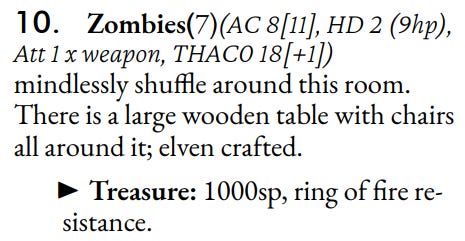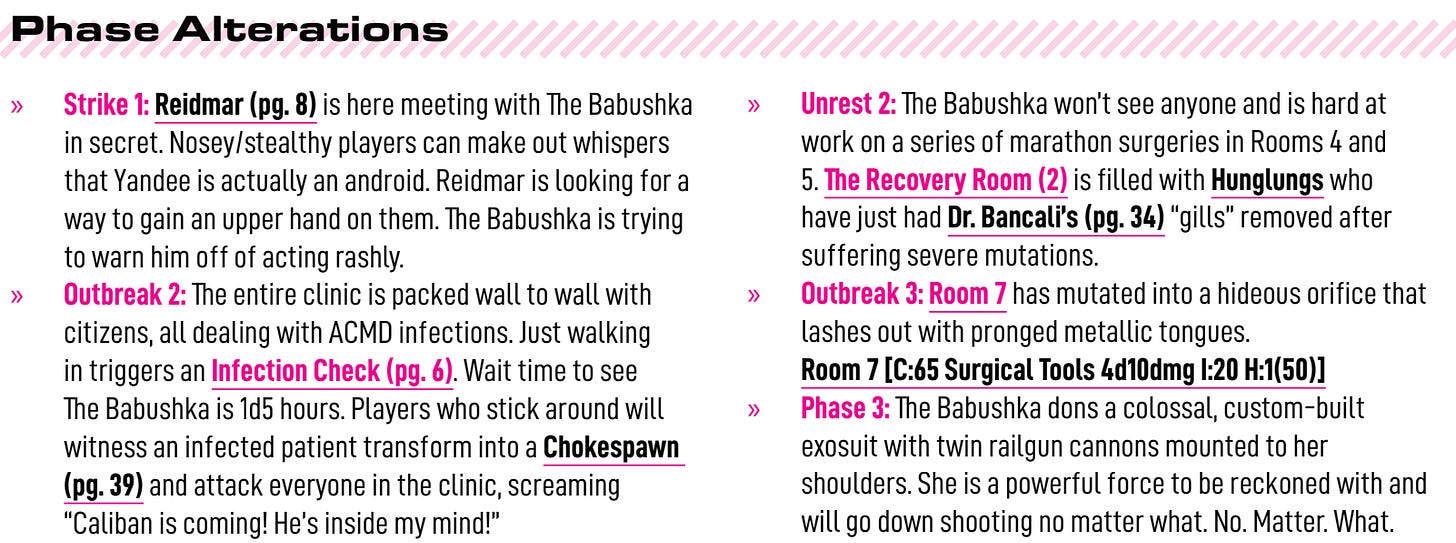Dungeon Restocking Redesign
Better prep beats the procedure?
This article contains affiliate links, meaning I get a commission if you make purchases using these links, at no cost to you.Restocking the dungeon.
This is a term for when we fill the dungeon back up with some stuff when the players leave it for safety and come back later. It makes a dungeon feel alive.
Let’s be honest. How many of you skip this shit? Or forget it?
I’d bet a fair number of you do, because you’re already busy! Here’s how we fix it being a pain. Let’s start with the problems of the traditional approaches.
Problems
The problems with restocking are:
It’s usually procedure heavy. You go back through rooms and roll to see if something new is there, then roll to determine what it is (e.g. trap, monster).
It might require you to track which rooms have been visited or cleared. Unless you do a giant restocking sweep of the whole dungeon (even more work), you have to track what’s been cleared and all that rubbish.
It requires you to go back to a room and partially (or entirely) reinvent it even though you might not even remember writing the damn thing.
So how do we make this less painful?
Don’t patch it. Prep it.
We’re going to write up our restocking ahead of time. That’s right, sounds gross, but trust me it works a treat.
Then we’re going to use a simple die roll to determine whether the restocking has happened as the players reach the room to save our (your) precious time.
Let’s take a simple room from an appropriate sized dungeon, the Tower of the Builders from In the Shadow of Tower Silveraxe:
This room has three features: zombies, some elven furniture, and a magic item.
As we key this room, we make a list of ways the room can ‘restock’:
If the zombies are not slain, they have moved to (insert room).
If the zombies are slain, (insert creature here) moves into this one.
If the ring is not taken, the ring is taken by (NPC in the dungeon).
If the item is taken, the room is overturned from (insert NPC) searching for it.
These are causal, relating to the PCs actions. A Pound of Flesh does something like this where it links the escalations of its 3 event tracks to location changes. You don’t need to tie these restockings to an event track… but you can.
You can write non-causal restockings if you prefer:
(NPC) lies dead here, their body and equipment is around.
(NPC) has set a trap here, hoping to eliminate monsters.
I think a mix is good.
When the PCs come back to a location they’ve already been to, roll a d6. On a 1 or 2, pick the most relevant evolution (or multiple if you feel it’s appropriate). On a 3 to 6, leave the location as it was. You can adjust this probability if you want a more lively or sedate dungeon.
An event track can work as well. If an event has happened, the restocking is triggered when the PCs next visit the location.
That’s it. Let’s talk about why it rocks.
Why it’s great
It took me around 2 minutes to come up with 6 examples above, just 2 minutes. 4 would be plenty, 2 would do. And you can imagine how much easier it is to write this as we design our dungeon vs. going back later.
All these restocking options can be supported by logic whilst we have the oversight of our whole dungeon design. We get to think about the event causality within rooms and how things might play out. Each room can tell a little story, an evolving one, which the PCs might shape with their actions.
No more rooms that randomly filled back up with treasure or you having to quickly decide yeah I’ll just put some more orcs in here.
Your dungeons become more detailed living and breathing things.
Next time you are keying a dungeon (or even an overland region), write restocking options or location evolutions there and then. Do your future GM self a favour.
If you like MurkMail, I share my freshest rpg-y thoughts in MurkMail Premium. Join MurkMail Premium (get a 7-day free trial).






I like this a lot! My own system is to use 1-in-6 odds for rooms that are empty between runs
This is a great idea! My group went through a location on Thursday night, which of course they sprang on me at the beginning of the session, so I had to go in with zero prep. They didn't "complete" clearing things out before they got low on hit points & resources and decided to RTB. I spent a few minutes after the session making notes and then about an hour the next morning completely resetting everything so that it's good to go for this Thursday.
I'll be using this strategy going forward!